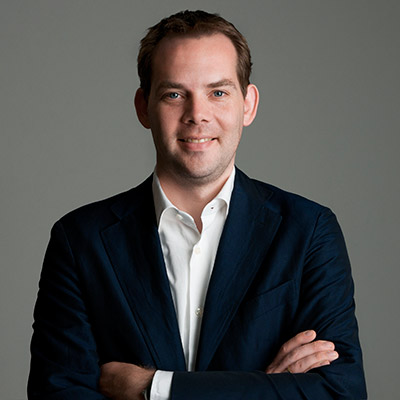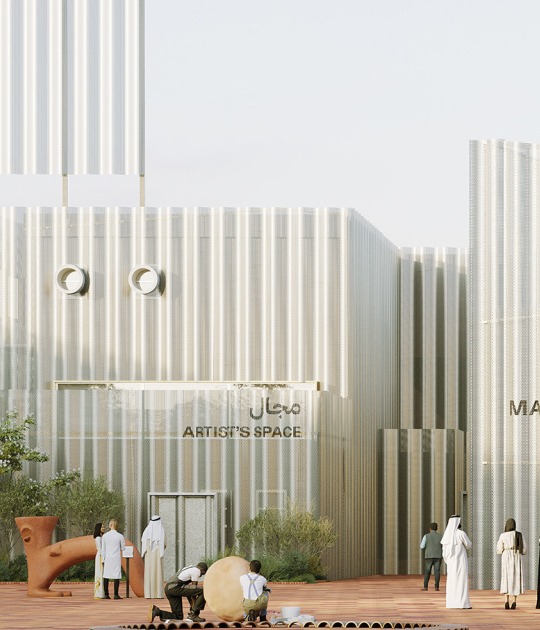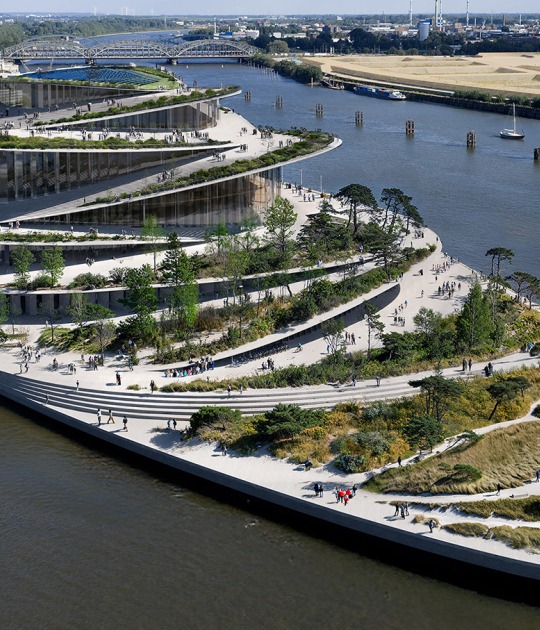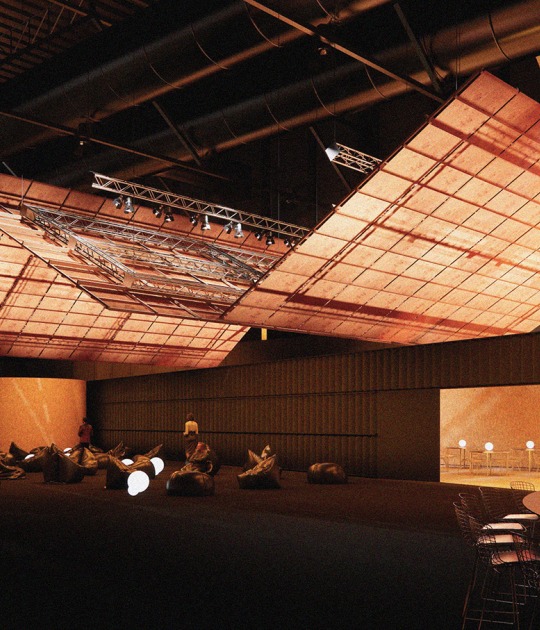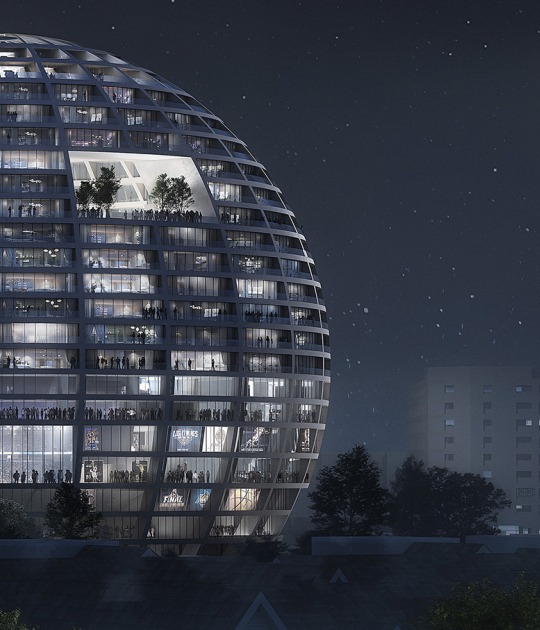The system consists of standardized wooden columns and cross-laminated wooden floor panels, which are connected by recycled steel joints. All the components are precisely made in the factory under a digitally controlled process to ensure fast assembly and disassembly by an electric crane on site. These components are arranged into structural frameworks, leaving all the partition walls non-load-bearing to create spaces of different sizes and uses, including classrooms, auditoriums, and gardens. The partition walls are biobased and can be adapted to support activities such as indoor climbing and vertical farming.

Innovation Partnership School Buildings by OMA. Rendering by Studio A Kwadraat, courtesy of OMA.
OMA and Circlewood conceptualize the schools as pedagogical tools that raise students’ consciousness of human impact on the environment. Contrary to greenwashing, the schools’ carbon footprint and resource consumption are visualized on information screens. The buildings are also inherently circular designs with minimized emissions – owing to the prefabricated building method that reduces nitrogen emissions, the carbon-absorbing biobased walls, and the building components that can be fully reused.
As Circlewood’s Creative Director, OMA will help with the selection of young architectural practices and landscape designers, and develop in collaboration with them new schools under the Innovation Partnership School Buildings program. A pilot school in Amsterdam has been developed in collaboration with Studio A Kwadraat. Functioning as an integrated children’s center, the compact building has a unique façade on each side, characterized by elements such as canopies and bike storage facilities that respond to the context and specific needs. The school has a spacious central hall for various children’s activities and different types of façade openings that offer frameworks for the children to perceive the environment. The program, layout, and appearance of the building can be refined and adapted over time.
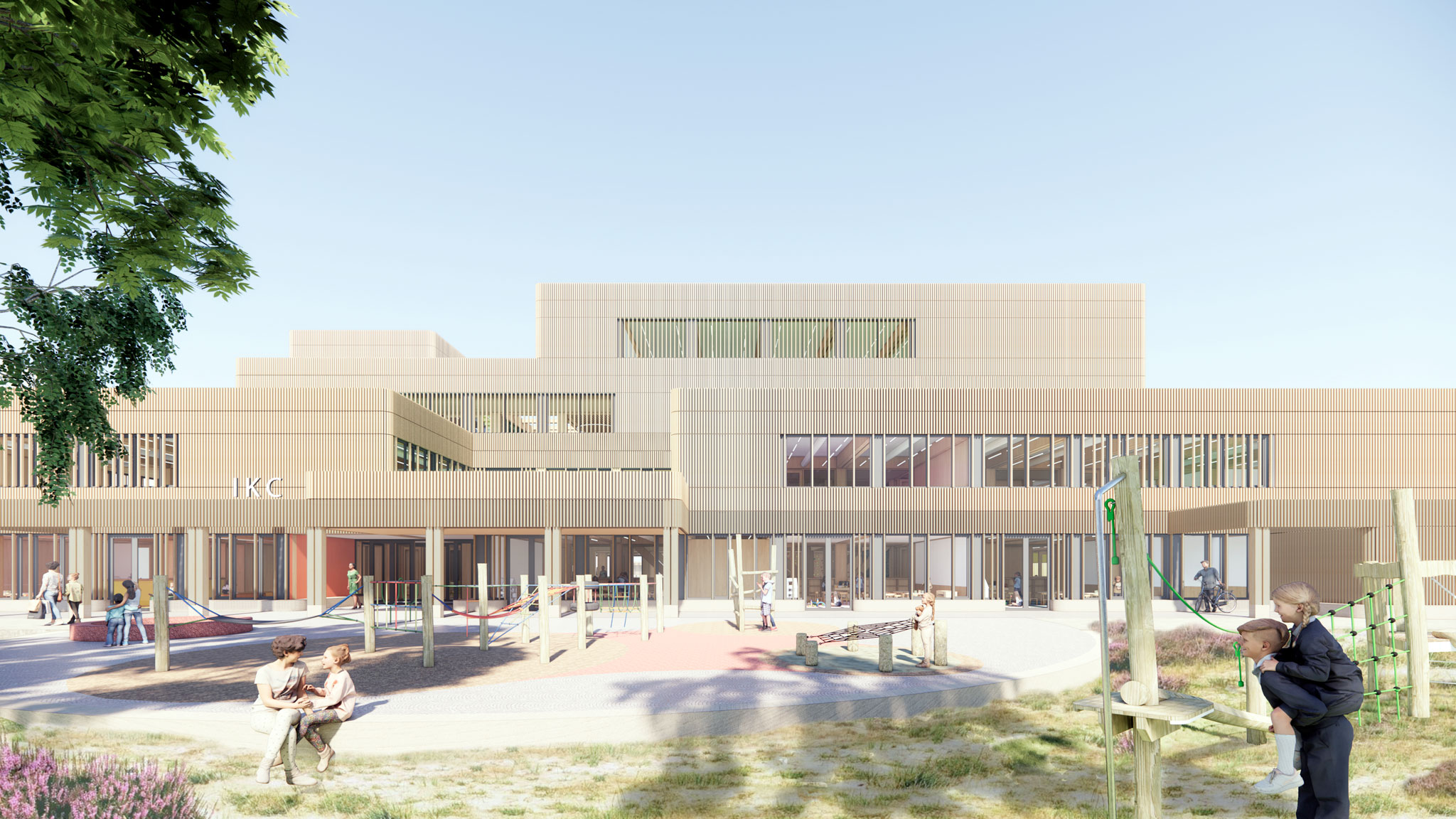
“The method is a kind of construction kit, with many technical requirements resolved upfront. This allows us as an architect to quickly set up a clear structure of the building, and we can fully focus on the final user and the client.”
“Every school gets its own architect who works well with the school board and the context. Each school appears unique.”
The current system designed by OMA and the Circlewood partners will be further refined, with the potential to be applied outside of Amsterdam and the Netherlands.
Circlewood consists of Noordereng Groep, Oosterhoff (ABT, Adviesbureau Lüning, bbn adviseurs), Studio A Kwadraat, DWA, Hedgehog Company, Heko Spanten B.V., EtuConsult, Lomans, Ferross Staalbouw, and OMA.













